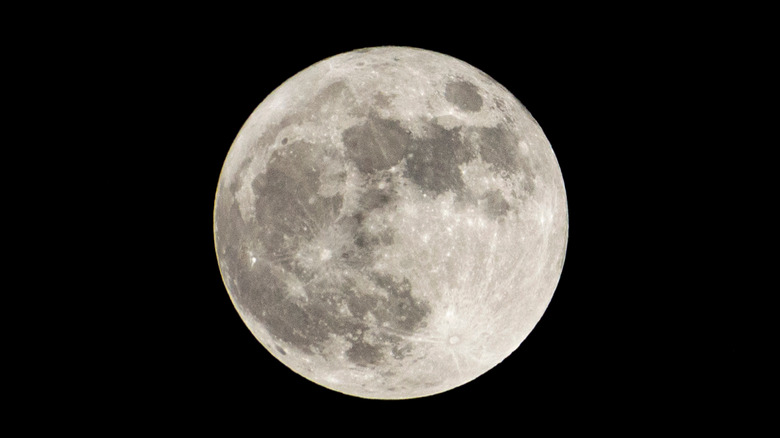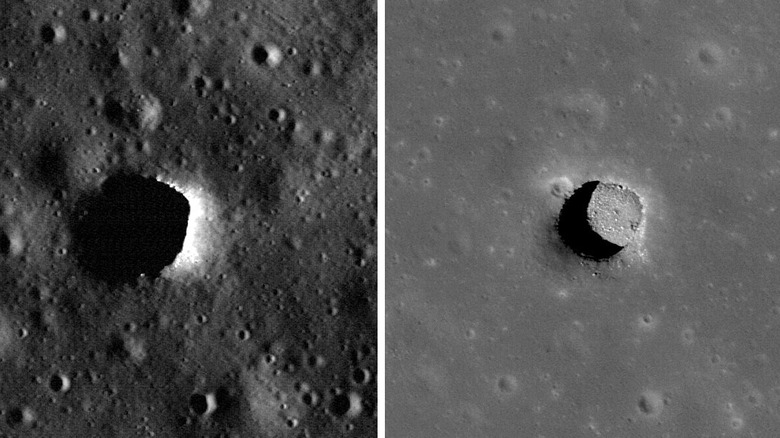Here's Where Astronauts Could Shelter On The Moon, According To NASA
NASA has ambitious plans for sending astronauts back to the moon within the next few years under the Artemis program, and even for setting up power generation and a longer-term outpost there. But the moon has a big unseen danger in the form of radiation because it is largely outside the protective magnetosphere of Earth. One of the challenges for future missions to the moon that aim to send people there for more than a few days is how to keep astronauts safe from both this dangerous radiation and the moon's highly variable temperatures, but a recent study could help to pinpoint a solution.
The moon is covered in pits, or shallow craters, which could be linked to underground caves called lava tubes. These lava tubes were formed when molten lava flowed beneath a harder lava crust, leaving a hollow tunnel behind (via NASA). And it is these pits and lava tubes that could provide shelter for future astronauts.
Research funded by NASA and published in the journal Geophysical Research Letters says that these pits stay at a more comfortable temperature than the rest of the moon's surface, sitting at a stable temperature of around 63 degrees Fahrenheit (17 degrees Celsius). Compare that to the swings of temperature seen on the moon's surface, where temperatures oscillate between up to 260 degrees Fahrenheit (about 127 degrees Celsius) during the day and minus 280 degrees Fahrenheit (about minus 173 degrees Celsius) at night. That makes them potentially valuable shelter for future moon explorers. "Humans evolved living in caves, and to caves we might return when we live on the Moon," said one of the study's authors, David Paige of the University of California, Los Angeles.
Exploring lava tubes
Taking advantage of lunar pits to shelter astronauts also opens the door to exploring under the lunar surface. Some of these pits could be linked to lava tubes that would allow researchers to get a view of the moon from a different angle. These pits could make interesting research locations, according to Noah Petro, project scientist for NASA's Lunar Reconnaissance Orbiter: "Lunar pits are a fascinating feature on the lunar surface," Petro said. "Knowing that they create a stable thermal environment helps us paint a picture of these unique lunar features and the prospect of one day exploring them."
Similar lava tubes are found on Earth, and the study authors used information about the lava pits on the moon's surface to infer that the caves formed by lava tubes would likely also be at comfortable temperatures. This is valuable because of the moon's day and night cycle. Due to the way it rotates, a lunar day lasts around two weeks. During these two weeks, the surface is bombarded by sunlight and can become extremely hot. But then night arrives, which also lasts around two weeks, and the moon is not only in perpetual darkness but also gets extremely cold. Having pits or caves where astronauts could shelter would make the longer-term habitation of the moon that much more feasible.

